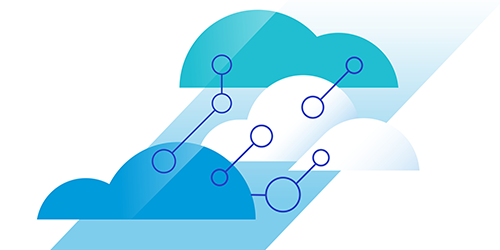Originally published on Gartner.com

Enterprise infrastructures are changing, posing new opportunities — and new threats — for I&O leaders.
As enterprise infrastructures evolve and shift in today’s digital-first world, infrastructure and operations (I&O) leaders need to prioritize adapting and protecting on their to-do lists.
“IT leaders need to formulate a cohesive cloud strategy that is expansive and forward-looking to fully reap the business value of cloud”
The number of Internet of Things (IoT) devices is doubling every five years, creating security risks that must be mitigated. The use of cloud computing is exploding, with enterprise applications migrating to the public cloud and organizations becoming more cloud-native in their deployments. Edge computing adoption is picking up pace as hyperscale cloud providers develop solutions to distribute their cloud capabilities closer to the edge.
Here are a few core predictions that require I&O leaders’ action to properly prepare for anywhere operations.
Isolated or segmented campus network devices will stand stronger against cyberattacks
Gartner expects more than 15 billion IoT devices will connect to the enterprise infrastructure by 2029. Corporate, guest, trusted and untrusted devices all pose a risk to the enterprise if I&O leaders do not properly coordinate when and how they will be connected.
It is not uncommon for IT organizations to find IoT devices on their networks that they did not install, secure or manage themselves. These are the devices that can be hacked in as little as three minutes, with breaches taking six months or more to discover.
“By segmenting or isolating devices, enterprises will be less vulnerable to cyberattacks”
Rally the entire organization to agree on a common governance structure for device connectivity. Without one, IT organizations will risk losing control of being able to secure the network. Create a device certification process for all devices that must be passed before any device is connected to the enterprise network. Be sure to include contributions from a cross-functional team, not just within IT.
By segmenting or isolating devices, enterprises will be less vulnerable to cyberattacks. In fact, through 2023, enterprises that do so will experience 25% fewer successful cyberattacks.
Deployments to the cloud are accelerating
Almost all of the respondents to the 2020 Gartner Cloud End-User Buying Behavior Survey indicated that their organization plans to maintain or increase IT spending on cloud computing in the next 12 months.
The rapid pace of innovation in cloud infrastructure and platform services (CIPS) makes cloud the de facto platform for new digital services and existing traditional workloads alike, which is why 40% or all enterprise workloads will be deployed in CIPS by 2023, up from only 20% in 2020.
Read more: The Everywhere Enterprise: A Gartner Q&A With David Cappuccio
The COVID-19 pandemic has resulted in a recalibration of cloud strategies, where collaboration, mobility and virtual desktops are rapidly moving to the cloud to enable a distributed and secure workforce. Disaster recovery and scale-out applications that benefit from the elasticity of cloud are now a high priority for cloud migrations.
“IT leaders need to formulate a cohesive cloud strategy that is expansive and forward-looking to fully reap the business value of cloud. Make sure it accommodates new industry developments in the areas of cloud-native platforms and distributed cloud services.”
John McArthur, Senior Director Analyst, Gartner.
Edge computing solutions will shake out over the next 5 years
Edge computing platforms are software and hardware that enable a zero-touch, secure, distributed computing architecture for applications and data processing at or near the edge.
Centralized, cloud-hosted management coupled with a growing portfolio of common cloud and edge capabilities puts hyperscale cloud providers in a good position to address a broader range of requirements for computing closer to the edge. Still, by year-end 2023, only 20% of installed edge computing platforms will be delivered and managed by hyperscale cloud providers (an increase from less than 1% in 2020).
“Prioritize a distributed cloud-based solution as the default and future-proof edge solutions”
“Edge computing is broad enough to support many submarkets, but it will evolve from supporting thousands of custom patterns to merely dozens, with cloud providers taking an important role all the way to the edge, or complementing edge solutions. It’s imperative that enterprises prioritize a distributed cloud-based solution as the default and future-proof edge solutions by relying on partnerships and ecosystems over a single-vendor approach.”
John McArthur, Senior Director Analyst, Gartner.
Edge computing tackles a growing demand to address lower latency, process the growing amount of data on the edge and support resilience to network disconnection.








